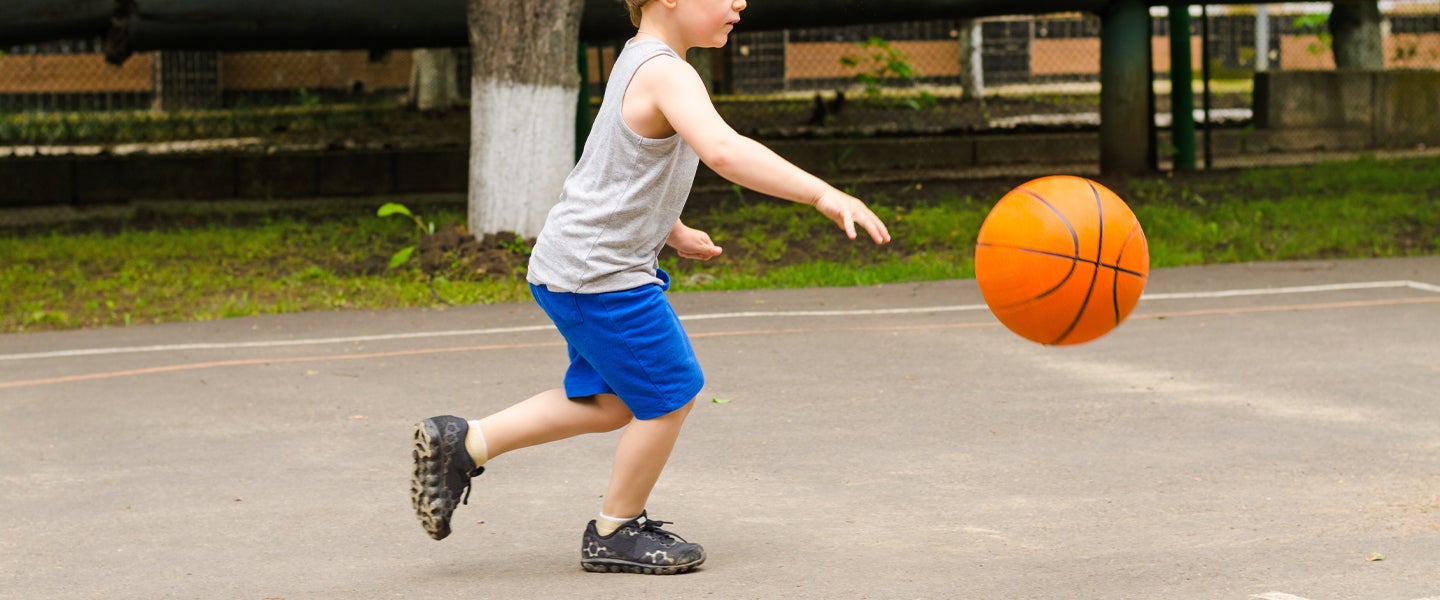If children had their way, you’d be building blanket forts, scaling trees and playing something called Four Square with them for approximately 14 hours a day. As a grown-ass adult with a desk job, however, it’s so logistically unrealistic that if we gave in, we’d all lose our jobs and society as we know it would break down in a week. That doesn’t mean we shouldn’t be doing something outside with our children that requires at least some motion on our part, especially during the summer when school’s out, but it’s also why you should take surveys like the one I’m about to describe with a large grain of Himalayan pink salt.
The survey in question, from the U.K. retailer Argos, found that 85 percent of parents have something called “fitness anxiety,” meaning they believe that their children are more fit than they are, and as such, they’re worried that they can’t keep up with them.
Obviously, it sounds pretty bad that parents are saying they’re too out-of-shape to play with their children. But there’s more nuance (and less sadness) here than at first glance: For starters, children are generally more fit than most adults. They literally don’t get tired as quickly, or for as long, when they do the same activities as grown-ups. In fact, when children aged 9 to 11 were asked to do seven-second resistance sprints, they beat out regular nonfit adults and nationally competitive long-distance runners and triathletes.
And so, the more important stuff we should be asking ourselves is…
- How much physical activity do kids need every day?
- How much of that should be outside in nature?
- How much of that should we be participating in with them?
Toddlers need about 180 minutes of physical activity a day. School-aged kids need about an hour of physical activity a day, but bare minimum, at least 30 minutes. All the little short bursts of 10 or 15 minutes here and there do count, though, so don’t think you have to get it all at once. Moreover, preschoolers are supposed to go outside at least twice a day; older kids can get this requirement met through team sports or P.E., provided they’re in one of the states that didn’t cancel P.E.
Studies have long proven that time spent outdoors is good for physical wellbeing and mental health, as well as cognitive development, whether it’s in the country or in nature-infused urban spaces. Oddly enough, unstructured play time, the kind you get in spades when you’re forced outdoors for a few hours a day, helps enormously with the ability to control one’s feelings and impulses. Some research has found that a 3-year-old today can regulate their feelings as well as a 5-year-old could in the 1940s because of the differences in unstructured play.
Back to the topic at hand, though: About half of parents don’t take their kids outside anymore, and even though the majority of parents would prefer that childhoods be spent largely outdoors, our children go outside now to play about half as much as we used to as children ourselves (they spend on average about four hours a week outside, compared to our eight).
So how do we close that gap?
Honestly, there is no real answer. Unstructured time is good for kids with or without adults, and barring the issue of whether you should be around your kid during play because it’s safe or not, there’s no magic number of hours you should be clocking every day with them. (Not to mention, modern parents actually spend twice the amount of time with their kids that a typical parent would’ve in 1965, which should make you feel better.)
All we know is that meaningful play with our kids — measured by both of you actually enjoying it, which education experts at Harvard describe as combining choice, wonder and delight — is critical to both their development and your relationship. In other words, for some parents, just squeezing out five minutes a day, if it’s done right, is more than enough. You can also input the daily number of hours you spend hanging with your child via this calculator, and then compare it with other parents who match your status on employment, gender and age of the child. I, for instance, spend as much time as about 70 percent of other parents who meet my same criteria.
This means 30 percent of parents are putting more into it, and I’m sure that should make me feel bad. But you know what? I hate Four Square, I can’t climb a tree anymore and I also have a job. You probably do too. So if you can shove your kid outside with a stick for half an hour today, congratulate yourself with some Fortnite and call it a day.

